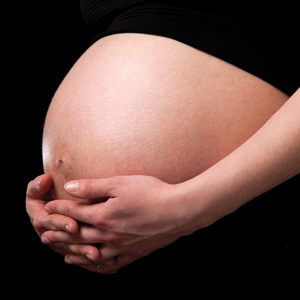Thirty percent of all babies in the U.S. arrive by C-section – the most ever, according to the National Center for Health Statistics. Why? For one, fewer women who’ve already had a C-section are having vaginal births, known as VBAC (vaginal birth after cesarean delivery). Technology is also a factor. Doctors can use ultrasound in the last weeks of pregnancy to predict whether a baby is too big to fit through Mom’s pelvis. And while vaginal births were once the norm for breech babies, most doctors think they’re too risky today. Whether you have a scheduled C-section or an emergency one, educating yourself will make the experience easier.
What are the most common reasons for C-sections?
Your doctor may schedule you for a C-section if you’re carrying multiples, or if your baby is breech or very large. In addition, if your baby is diagnosed with a birth defect or a placental abnormality in utero, a C-section may be preferred. You may need to undergo an emergency C-section if your baby shows signs of distress or if your labor fails to progress or if you are running a fever.
Are C-sections safer for my baby than a vaginal birth?
“If there is real failure to progress with labor, or if the baby’s heart rate is a cause for concern, then it’s safer to have a C-section,” says Elena M. Kamel, M.D., an OB-GYN. Still, there are certain risks. “Babies who are born by C-section have a higher incidence of respiratory problems. Since they don’t pass through the birth canal they miss the squeezing action that helps clear their lungs of amniotic fluid,” says Kamel.
Is vaginal birth after C-section (VBAC) safe?
The biggest danger doctors worry about during a VBAC is uterine rupture – a potentially life-threatening tear in the uterus. If your doctor offers them, evaluate your risk factors before making a decision, Larsen urges. Women who aren’t induced, have had only one C-section and are at least 18 months past their previous delivery have the lowest risk of rupture. With a VBAC, there’s also a small chance (five to 10 babies per 10,000 each year) of brain damage or death to the baby. The pros: “Besides a faster recovery time, VBAC is something to consider if you’re having your second child and want to have more,” Larsen says. With multiple C-sections, surgery gets more difficult, and there’s an increased risk of chronic pelvic abdominal pain and numbness developing at the incision site.
What kind of recovery can I expect after a C-section?
A C-section requires a longer recovery time than a vaginal birth. Typically, you’re in the hospital for three days instead of two and then lying low, doing minimal activity for several weeks while your incision heals, although you needn’t be bedridden.
“Modern incisions are sewn up in such a way that there’s no danger that normal activity at home is going to pull them apart,” says Larsen. You can walk up and down the stairs and clean the house (even vacuum if you like), but to minimize muscle soreness, “don’t lift and strain,” he advises. At the six-week to two-month mark, you can go back to a work. “By three months post-surgery, you should be good as new and you can resume more rigorous activities such as playing tennis,” he says.
Sandra Gordon is a writer and frequent contributor to our publications.





